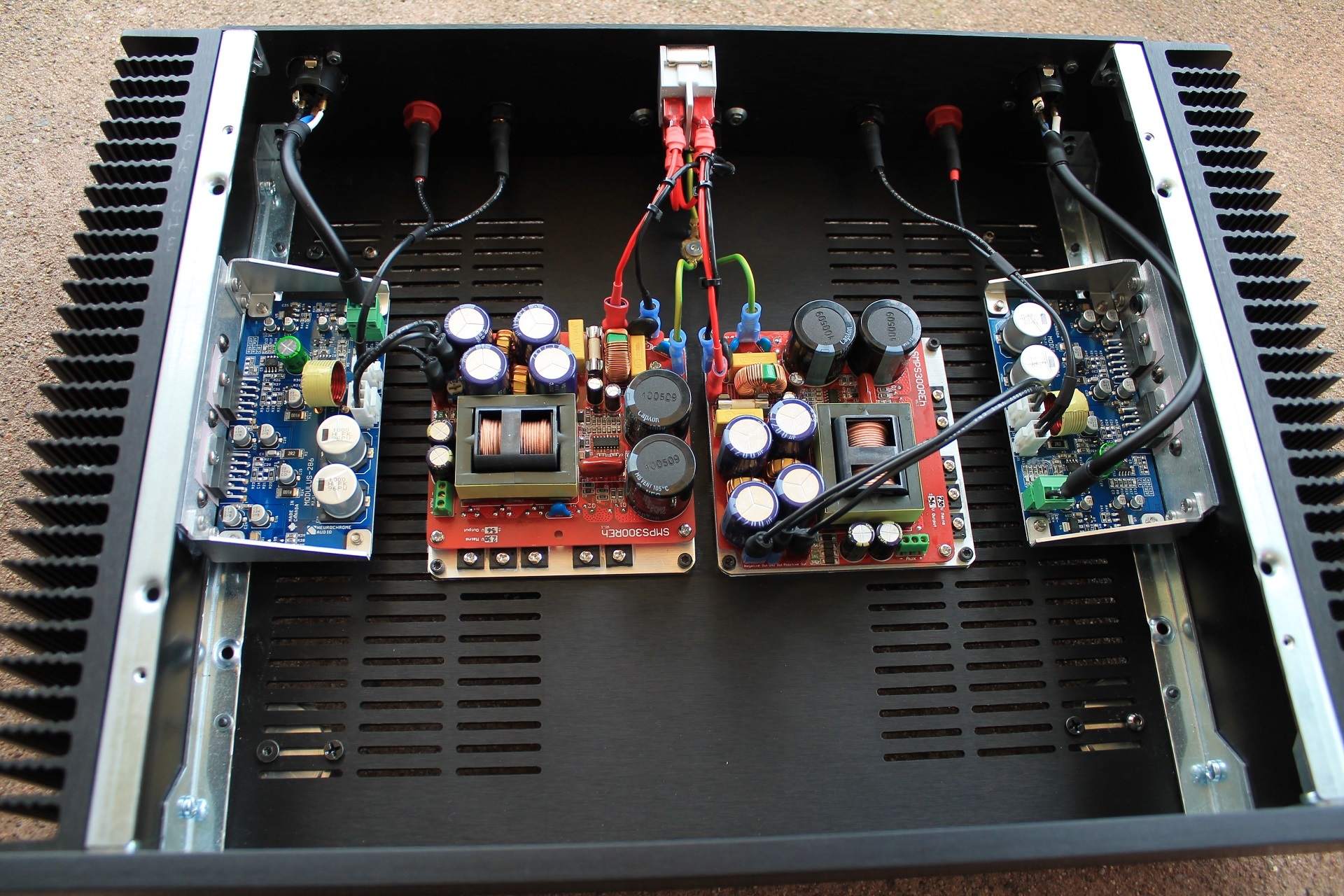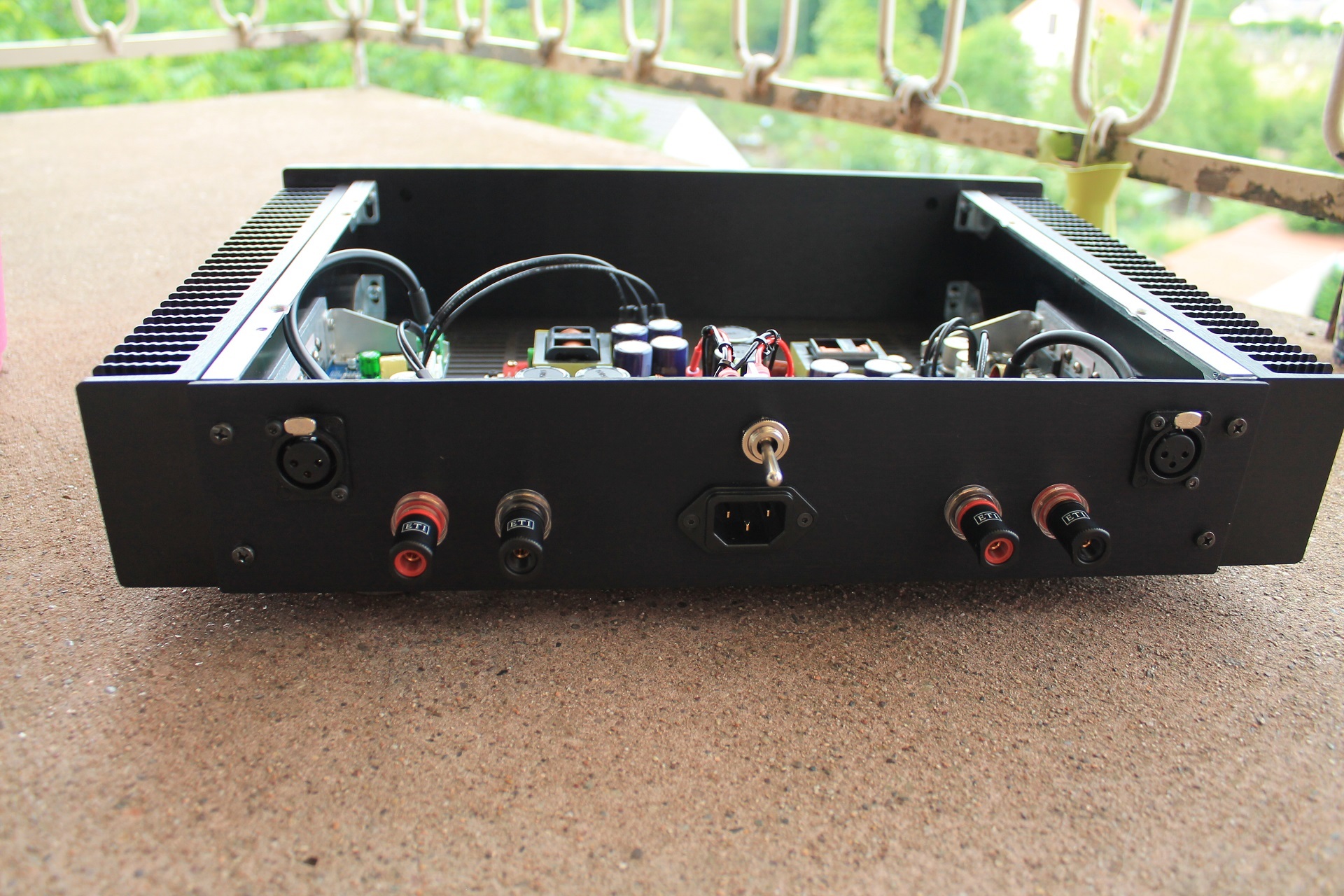I suggest reading about composite amplifiers. Walt Jung's book (free download) and Sergio Franco's book (not free by any stretch of imagination) are good places to start. I give the full references here: Become a Better Audio Circuit Designer: Recommended Texts – Neurochrome
Once you understand how composite amplifiers work, I think your remaining questions will fall into place.
The short answer is: Loop gain reduces errors. Lots of loop gain (or at least sufficient loop gain) makes the amplifier insensitive to the outside world. That's why the Modulus amps perform as well on a linear or switching supply as they do on a well-regulated lab power supply.
Tom
Once you understand how composite amplifiers work, I think your remaining questions will fall into place.
The short answer is: Loop gain reduces errors. Lots of loop gain (or at least sufficient loop gain) makes the amplifier insensitive to the outside world. That's why the Modulus amps perform as well on a linear or switching supply as they do on a well-regulated lab power supply.
Tom
Thanks Tom
I will read and learn.
I looked at your amp specification on your website and this thread and I didn't find anywhere how steady (probably the wrong word) the power supply has to be.
What amount of ripple is acceptable for your amp?
Are there clear defined minimum and recommended specifications for the power supply to your amp(s)?
When I look at your Power-86 it supports capacitors up to 41.5mm. The biggest for that size which I found on Mouser has 22,000uF/40V. Would 10,000 or 2*22,000 make an audible difference?
I will read and learn.
I looked at your amp specification on your website and this thread and I didn't find anywhere how steady (probably the wrong word) the power supply has to be.
What amount of ripple is acceptable for your amp?
Are there clear defined minimum and recommended specifications for the power supply to your amp(s)?
When I look at your Power-86 it supports capacitors up to 41.5mm. The biggest for that size which I found on Mouser has 22,000uF/40V. Would 10,000 or 2*22,000 make an audible difference?
Don't forget that the controlling op-amp also needs good Power Supply Rejection (PSRR)
True. That said, the controlling opamp is behind a local regulator, so its power supply is quite isolated from the supply connected to the board already.
What amount of ripple is acceptable for your amp?
Are there clear defined minimum and recommended specifications for the power supply to your amp(s)?
I can't give you a clear number because reality is fuzzy. I have measured the performance of the Modulus-86, -186, and -286 with a power supply that has 2x22000 uF total capacitance (so 22000 uF per rail). It measures line-on-line with the lab supply until the point of clipping.
Lower capacitance will give you higher ripple. Higher ripple results in lower supply voltage under load, which means an amp that runs with lower supply capacitance will clip a few watt earlier than an amp that runs with more supply capacitance.
When I look at your Power-86 it supports capacitors up to 41.5mm. The biggest for that size which I found on Mouser has 22,000uF/40V. Would 10,000 or 2*22,000 make an audible difference?
Probably not. 2x10000 uF total (10000 uF per rail) is the lowest I'd go. Going from 10000 uF to 22000 uF increases the cost of the cap by ~50%. Going to 33000 uF is roughly 3x the cost of the 10000 uF cap. Still, 2x33000 uF (CDE P/N: 380LX333M050A082 for example) would set you back about $20, so it shouldn't blow the budget completely.
Tom
Hi tomchr,
Can you share a little about the power consumption of the Modulus 286 with the recommended supply, compared to the consumption of your other amplifier models? I spend my listening time below 1W (89dB speakers, 5.5 Ohm) at just above talking level, if that provides a bit of help.
Thank you!
Can you share a little about the power consumption of the Modulus 286 with the recommended supply, compared to the consumption of your other amplifier models? I spend my listening time below 1W (89dB speakers, 5.5 Ohm) at just above talking level, if that provides a bit of help.
Thank you!
The idle current of the Modulus amps is roughly:
Tom
- Modulus-86/186: 65-70 mA
- Modulus-286: 110-120 mA
- Modulus-686: 350-370 mA
Tom
Tom,
I take it that this is per channel, given that the LM3886 data sheet states the "typical" current of the LM3886 is 50mA and max is 85mA. Take into account the other IC's on the board for the grand total per channel and it makes sense that a Modulus 286 is about 120mA/ch.
Of note to the OP who asked the question, I do remember when Tom brought the Modulus 686 in a cute small 3U chassis [to fit in his suitcase!] to Burning Amp a few years back and with (6) LM3886's per heatsink, it was barely lukewarm to touch. But phenomenal to listen to! 😀
Best,
Anand.
I take it that this is per channel, given that the LM3886 data sheet states the "typical" current of the LM3886 is 50mA and max is 85mA. Take into account the other IC's on the board for the grand total per channel and it makes sense that a Modulus 286 is about 120mA/ch.
Of note to the OP who asked the question, I do remember when Tom brought the Modulus 686 in a cute small 3U chassis [to fit in his suitcase!] to Burning Amp a few years back and with (6) LM3886's per heatsink, it was barely lukewarm to touch. But phenomenal to listen to! 😀
Best,
Anand.
Yep. Typical, per channel, based on my recollections of the ammeter readout on my lab power supplies.
I remember that MOD686 build. That suitcase weighed in at exactly 21.0 kg - the limit for a monkey class flight. 🙂
Tom
I remember that MOD686 build. That suitcase weighed in at exactly 21.0 kg - the limit for a monkey class flight. 🙂
Tom
I happened to have a stack of Modulus-186 and -286 modules on my desk for testing this evening. Here are the current draws of a typical module:
Modulus-186: 85-90 mA
Modulus-286: 150 mA
I'm pretty confident in the 350-370 mA for the Modulus-686.
But as Anand said, you can calculate the current consumption from the data sheets. I give the full chip compliment on the respective product pages (and am honestly too lazy to calculate it right now. It's been a long day).
Some may be delighted to learn that I now have the Modulus-186, 286, and 686 in stock at decent quantities.
Tom
Modulus-186: 85-90 mA
Modulus-286: 150 mA
I'm pretty confident in the 350-370 mA for the Modulus-686.
But as Anand said, you can calculate the current consumption from the data sheets. I give the full chip compliment on the respective product pages (and am honestly too lazy to calculate it right now. It's been a long day).
Some may be delighted to learn that I now have the Modulus-186, 286, and 686 in stock at decent quantities.
Tom
Hello, Tomchr
Can you explain the difference in measurements CMRR and THD+N between modulus-686 and modulus-286
Can you explain the difference in measurements CMRR and THD+N between modulus-686 and modulus-286
The Modulus-686 is a completely different architecture than the Modulus-286. I would not expect them to measure the same.
Tom
Tom
I finished assembling the Modulus 286,I took my time,I did not want to come back to something,it consists of a Modushop Dissipante 2U 300 mm,2 Connex SMPS 300 REh,Binding post ETI BP-20C,switches Apem,The listening will be for this week,thank you Tom who always was when I needed him.







With Mundorf L300 Air Core Coil







With Mundorf L300 Air Core Coil
Nice and clean no-nonsense build! Thanks for sharing. Should you feel like commenting on your listening impressions once you get a few hours on the amp, I'm all ears.
Tom
Tom
Very clean build! How does it sound?Thank you Tom, of course the impressions of listenings will follow.
Thanks mocinego,Very clean build! How does it sound?
in fact the sound is very neutral,no lack of power for my Seas Exel/Dynaudio Esotar T330 Speaker ,I think I'm more hearing the sound of my Bryston preamp than that of the modulus 286🙂
Nice build! I’m sure it sounds great.I finished assembling the Modulus 286,I took my time,I did not want to come back to something,it consists of a Modushop Dissipante 2U 300 mm,2 Connex SMPS 300 REh,Binding post ETI BP-20C,switches Apem,The listening will be for this week,thank you Tom who always was when I needed him.
With Mundorf L300 Air Core Coil
Thanks 😉Nice build! I’m sure it sounds great.
Yes I am very happy.
That's fantastic. Good to hear.
I do like those Connex SMPS300REh. They're nice little supplies. Much more reliable than the previous version without heat sink (SMPS300RE).
Tom
I do like those Connex SMPS300REh. They're nice little supplies. Much more reliable than the previous version without heat sink (SMPS300RE).
Tom
- Home
- Vendor's Bazaar
- Neurochrome Modulus-286: 65W (8Ω); 125W (4Ω) @ <-120dB THD Composite Amplifier Module